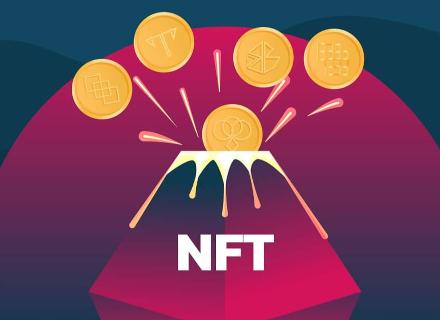Abstract: Non-Formalized Tokens (NFT) are digital assets based on blockchain technology, bringing a new paradigm to digital art and asset ownership. Through NFT, artists can prove the uniqueness and ownership of their works, bringing new opportunities and changes to the digital art market. In addition, NFT expands the application areas of digital assets, including game props and virtual real estate. In this paper, we will explore the definition, principles and applications of NFT, and illustrate how NFT has changed the digital art and asset fields through real-life examples that are searchable and verifiable.

INTRODUCTION
The advent of the digital era has brought many new opportunities and challenges, one of which is the development of digital art and assets. In the traditional art market, the ownership and authenticity of artworks are subject to cumbersome certification and regulatory processes. However, the emergence of non-homogenized tokens (NFTs) based on blockchain technology has brought a whole new paradigm to the ownership of digital art and assets. Through NFT, artists can prove the uniqueness and ownership of their works, bringing new opportunities and changes to the digital art market.
1. Definition and Principle of NFT
1.1 Definition of NFT
Non-Fungible Token (NFT) is a digital asset based on blockchain technology, each NFT has a unique identifier and metadata, making it unique and scarce in the digital world.
1.2 Principle of NFT
The core principle of NFT is a decentralized ledger based on blockchain technology, such as the ethereum blockchain. Each NFT is created and managed through a smart contract, which records the ownership and transaction history of the NFT, ensuring its authenticity and immutability.
2. Changes in the Digital Art Market
2.1 Uniqueness and Proof of Artwork
With NFTs, artists can publish their works digitally and create unique NFTs through Smart Contracts. this enables artists to prove the uniqueness and ownership of their works, eliminating the problem of digital art being copied and pirated.
2.2 Trading and circulation of artworks
NFTs provide a more convenient and transparent way to trade and circulate digital artworks. Through smart contracts on the blockchain, artists can set the conditions of sale and royalty mechanisms for their works, ensuring that they will gain from secondary sales.
2.3 Emerging Digital Art Market
The emergence of NFT has given rise to emerging digital art markets, such as NFT marketplaces and auction houses. These platforms provide artists with opportunities to display and sell their works, and provide collectors with a diverse selection of digital artworks.
3. Extended Applications of NFT
3.1 Game props and virtual real estate
NFT is not only limited to digital art, but can also be applied to areas such as game props and virtual real estate. Game developers can create NFT for game props and virtual items, and players can actually own and trade these digital assets.
3.2 Intellectual Property Protection
NFT can also be applied in the field of intellectual property protection. By transforming intellectual property into NFTs, creators can ensure the copyright and originality of their works and prevent piracy and infringement.
3.3 Authentication and Traceability
NFT can also be used in the field of identity authentication and traceability. By binding identity information or product information to NFT, the authenticity of identity and the traceability of products can be ensured.
4.Real Case Study
4.1 Beeple's digital artwork "Everydays: The First 5000 Days" was sold at auction for nearly 70 million dollars, setting a record for digital art auctions. This work attracted the attention and bidding of collectors worldwide through NFT's proof of uniqueness and ownership.
4.2 A virtual piece of land on Decentraland, a virtual real estate platform, was sold for nearly $1 million. The ownership of this land was confirmed and transferred through NFT, demonstrating the potential and value of the virtual real estate market.
4.3 NBA Top Shot is a blockchain-based NFT platform that allows users to buy and trade moments from NBA games. These moments are converted into NFTs, allowing fans to literally own and trade the performance of their favorite basketball stars in the digital world.
Conclusion
Non-identical tokens (NFTs), as digital assets based on blockchain technology, bring a new paradigm to digital art and asset ownership. Through NFT, artists can prove the uniqueness and ownership of their works, thus driving growth and change in the digital art market. At the same time, NFT expands the application areas of digital assets, including game props and virtual real estate. Through searchable and verifiable real-life examples, we can see that NFT has already had a profound impact on the digital art and asset fields, bringing creators, collectors and users new experiences and opportunities. With the continuous development and innovation of blockchain technology, the application prospects of NFT will continue to expand, bringing more possibilities and value to the digital economy.
標題:Lidcoin transforms digital art and assets
地址:https://www.utechfun.com/post/260931.html
